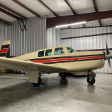Help me decide - Manual vs Electric Gear
-
Members Online
- BillyT0020
- richardbrochu27
- Glen S.
- N201MKTurbo
- bazerk007
- Fix
- MattD89
- exM20K
- 30X
- Bob K
- Deb
- Chaseford10
- Aaviationist
- IFLYIFR
- TCC
- 201er
- Rwsavory
- prillayo03
- mooneyflyer
- Patrick Horan
- Greg Ellis
- BlueSky247
- Marc_B
- Guilly
- RangerM20
- William A
- hubcap
- Fly Boomer
- affricate
- hazek
- Paul Thomas
- chrisburdzy98
- Jake@BevanAviation
- Buckeyechuck
- Marc B
- buddy
- 201Steve
- LANCECASPER


Recommended Posts
Join the conversation
You can post now and register later. If you have an account, sign in now to post with your account.